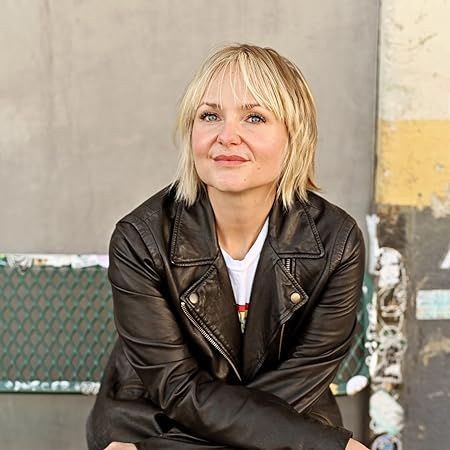The Knockout Queen: A novel (Vintage Contemporaries)
4.2
-
747 ratings
FINALIST FOR THE 2021 PEN/FAULKNER AWARD
"Full of verve... Revelatory." —Los Angeles Times
A dazzling and darkly comic novel of love, violence, and friendship in the California suburbs
Bunny Lampert is the princess of North Shore—beautiful, tall, blond, with a rich real-estate-developer father and a swimming pool in her backyard. Michael—with a ponytail down his back and a septum piercing—lives with his aunt in the cramped stucco cottage next door. When Bunny catches Michael smoking in her yard, he discovers that her life is not as perfect as it seems. At six foot three, Bunny towers over their classmates. Even as she dreams of standing out and competing in the Olympics, she is desperate to fit in, to seem normal, and to get a boyfriend, all while hiding her father's escalating alcoholism. Michael has secrets of his own. At home and at school Michael pretends to be straight, but at night he tries to understand himself by meeting men online for anonymous encounters that both thrill and scare him. When Michael falls in love for the first time, a vicious strain of gossip circulates and a terrible, brutal act becomes the defining feature of both his and Bunny's futures—and of their friendship. With storytelling as intoxicating as it is intelligent, Rufi Thorpe has created a tragic and unflinching portrait of identity, a fascinating examination of our struggles to exist in our bodies, and an excruciatingly beautiful story of two humans aching for connection.
Kindle
$12.99
Available instantly
Audiobook
$0.00
with membership trial
Library Binding
$37.95
Paperback
$14.42
Ships from
Amazon.com
Payment
Secure transaction
ISBN-10
0525567291
ISBN-13
978-0525567295
Print length
288 pages
Language
English
Publisher
Knopf Doubleday Publishing Group
Publication date
March 01, 2021
Dimensions
5.19 x 0.72 x 8 inches
Item weight
9.6 ounces
Product details
ASIN :
B07VP1SKVH
File size :
2336 KB
Text-to-speech :
Enabled
Screen reader :
Supported
Enhanced typesetting :
Enabled
X-Ray :
Enabled
Word wise :
Enabled
Editorial reviews
An InStyle Best Book of 2020
A Kirkus Fiction Writer to Discover in 2020
An Entertainment Weekly, Parade, and LitHub Most Anticipated Book of 2020
"[An] electric portrait of adolescence." —Time
"The Knockout Queen [is] full of verve and sketched in colors as vibrant as a Tilt-A-Whirl David Hockney landscape... Thorpe inverts the more common tale of an impoverished sufferer who is momentarily saved or mourned by a richer, more stable friend. The result is revelatory." —Hillary Kelly, Los Angeles Times
"Rufi Thorpe unfurls a coming of-age tale that feels both fresh and familiar: a shrewd exploration of all the ways people find to pass on the hurt and anger they’ve been given and a tender, furious ode to the connections that somehow still endure, despite everything. A-" —Entertainment Weekly
"One of the most piercing, accurate portrayals of what it means to be a teenager, and figuring out who you are in the world that I've ever come across... Thorpe's ability to capture the ways in which we manifest psychic pain in physical ways is uncanny, and the end result is a coming-of-age novel that is unsettling and resonant in all the most important ways." —Kristen Iversen, Refinery 29
"This is my favorite book of the year so far.” —Book of the Month Club, Siobhan Jones
"Thorpe’s story immediately enfolds the reader, moving them swiftly forward, swept up in the current. Nothing in this story is as black and white as we may be led to believe life is, or should be. Thorpe explores the humanity of each and every character on the page. 9/10" —Nerd Daily
"Thorpe comes back swinging with her best novel yet... From the very start, the story is infused with an unsettling sense of menace, which Thorpe skillfully wields to pierce through the veneer of her shiny California setting to honestly examine weighty topics such as friendship, sexuality, identity and belonging... With charismatic characters and a surprising and devastating storyline, The Knockout Queen is a moody and mordantly funny contemplation of the rigors of growing up that will leave readers reeling." —BookPage, starred
"Thorpe… writes with savage poignancy as she explores identity, adolescent friendship, and the insatiable longing for intimacy. Her novel is devastatingly honest, her characters vulnerable, and her readers will be spellbound.” —Booklist
"Thorpe’s fierce third novel observes the development of and challenges to an intense friendship between two outcasts at a Southern California high school… Deeply realized and complex. The result cannily dissects the power and limits of adolescent friendship.” —Publishers Weekly
"Thorpe takes a familiar plotline—a pair of teen misfits form an unlikely but life-altering friendship—and turns it into an arrestingly original, darkly comic meditation on moral ambiguity.... There are no victims here and no heroes, either. In Thorpe's Technicolor world, everyone is an innocent and everyone is culpable and no one is absolved, and the result is a novel both nauseatingly brutal and radically kind. Brilliantly off-kilter and vibrating with life." —Kirkus, starred
"A knockout of a novel... beautiful, sad, hopeful, and fully engaging." —El Segundo Scene
“I loved The Knockout Queen. A blistering, brilliant look at friendship and violence, suburbia and class, all told by one of the most observant, engaging narrators I’ve read in a very long time. This book is going to stay with me.” —Grant Ginder, author of Honestly, We Meant Well and The People We Hate at the Wedding
“Rufi Thorpe writes with a savage, clear-eyed calm that is frighteningly good. The Knockout Queen unsettled me in the most delicious way with its complex and satisfying relationships and meditation on violence, beauty, and privilege. Read it!!” —Jade Chang, author of The Wangs vs. the World
“Is it cheesy to say The Knockout Queen knocked me off my feet? I couldn’t put it down, and when I had to, I did so only reluctantly, shakily. With unrelenting humor and terrifying intelligence, Rufi Thorpe tells the story of an unlikely high school friendship—the kind of friendship from which you never recover—with intensity and attentiveness. This captivating, generous book is a moving examination on human motivation, darkness, and love—calling attention to the ways we can be deeply different, and yet so much the same.” —Rachel Khong, author of Goodbye, Vitamin
"Fearless, tender, and savagely alive, The Knockout Queen is unlike anything you'll read this year. Rufi Thorpe's third novel is about unruly thoughts and unruly bodies, about violence and love, about doing the wrong thing for the right reasons and the drag of human being. You won't be able to look away. You might even recognize yourself.” —Chloe Benjamin, best-selling author of The Immortalists
“The Knockout Queen is an intense, unflinching examination of friendship, the threads that connect us in such strange ways. Rufi Thorpe navigates this difficult terrain thanks to a masterful use of detail and a wonderfully dark sense of humor that lands at just the right moment. Michael and Bunny are two of the most unique characters I've ever met, drawn with such precision that it's impossible to leave them behind. This is a hypnotic, beautiful novel, and Rufi Thorpe is an unbelievably unique talent.” —Kevin Wilson, best-selling author of Nothing to See Here
“The Knockout Queen is the best book I've read in months! Its one-of-a-kind narrator is funny, vulnerable, brilliant, and brimming with longing, and the story he tells distills the pain and beauty of a life-changing friendship like nothing else I've read before. This book's got guts and heart, and wisdom for days, and I could not put it down. Rufi Thorpe is one of the most exciting novelists working today. This novel is truly exceptional. I loved it.” —Edan Lepucki, best-selling author of California and Woman No. 17
"Brilliantly constructed and beautifully told, threaded with heartbreak, honesty and hope, The Knockout Queen is a sublime coming of age story and Rufi Thorpe is a national treasure." —Cynthia Sweeney, best-selling author of The Nest
Read more
Sample
Chapter 1
When I was eleven years old, I moved in with my aunt after my mother was sent to prison.
That was 2004, which was incidentally the same year the pictures of Abu Ghraib were published, the same year we reached the conclusion there were no weapons of mass destruction after all. What a whoopsie. Mistakes were made, clearly, but the blame for these mistakes was impossible to allocate as no one person could be deemed responsible. What was responsibility even? Guilt was a transcendental riddle that baffled our sweet Pollyannaish president. How had it happened? Certainly he had not wanted it to happen. In a way, President Bush was a victim in all this too.
Perplexingly, the jury had no difficulty in assigning guilt to my own mother as she sat silently, looking down, tears running and running down her face at what seemed to me at the time an impossible rate. Slow down, Mom, you’ll get dehydrated! If you have never been in a criminal courtroom, it is disgusting. You have seen them so often on TV that seeing an actual one is grotesque: the real live lawyers, all sweaty, their dark mouths venting coffee breath directly into your face, the judge who has a cold and keeps blowing his nose, the defendants who are crying or visibly shaking, whose moms are watching or whose kids are trying to sit still in the back. It’s a lot to take in when you’re eleven and even just a few months prior you were making an argument that not receiving a particular video game for your birthday would be “unfair.”
The town to which my little sister and I were relocated after a brief stint in foster care was a suburban utopia a la Norman Rockwell, updated with a fancy coffee shop and yoga studio. We moved in just before the Fourth of July, and I remember being shooed into a town fair, where there were bounce houses and hot dogs being sold to benefit the Kiwanis club. What the fuck was the Kiwanis club? I was given a wristband and ten dollars and told to go play. A woman painted a soccer ball on my face. (All the boys got soccer balls, and all the girls got butterflies; those were the options.)
Bordered on the west by the sea, on the north by a massive airport, on the east by a freeway, and on the south by a sprawling, smoke-belching oil refinery, North Shore was a tiny rectangle. Originally built as a factory town for the oil refinery, it was a perfect simulacrum of a small town anywhere in America, with a main street and cute post office, a stately brick high school, a police department with predictably brutalist architecture; but instead of fading into rural sprawl at its edges, this fairy-tale town was wedged inside the greater body of Los Angeles.
My aunt’s place was one of those small stucco houses that look immediately like a face, the door forming a kind of nose, and the windows on either side two dark, square eyes. She had a cypress bush in the front that had turned yellow on one side, and many pinwheels planted on the border of her lawn, the bright- colored plastic sun-bleached to a ghostly white as they spun in the wind. North Shore was a windy place with many hills, and I was shocked that people could live in such a wonderful climate without smiling all the time. The air pollution from the airport and oil refinery were pushed inland by the sea breezes. Even our trash cans did not smell, so clean was the air there. Sometimes I would stick my head into them and breathe deeply, just to reassure myself that trash was still trash.
On either side, my aunt’s house was flanked by mansions, as was the case on almost every street of the town. Poor house, mansion, poor house, mansion, made a chessboard pattern along the street. And the longer I came to live there, the more clearly I understood that the chessboard was not native but invasive, a symptom of massive flux. The poor houses would, one by one, be mounted by gleaming for sale signs, the realtor’s face smiling toothily as the sign swayed in the wind, and then the for sale sign would go away, and the house would be torn down and a mansion would be built in its place.
If there were people living in the mansion to the right of our house, I never saw them. Their trash cans did not go out, no cars parked in their drive, except a gardener who came like clockwork every Tuesday, who always gave me a nervous but friendly wave. In the mansion to the left of our house, there lived a girl and her father, a girl who, though I would never have guessed it from looking at her, so young and unsullied did she seem, was my own age, and with whom I would go to school for the next seven years. Her name was Bunny Lampert, and she was the princess of North Shore, and somehow, almost against my will, I became her friend.
One thing that Bunny and I had in common, besides being next-door neighbors, was an unusual lack of adult supervision. North Shore being the paradisiacal bubble that it was, many children walked to school or rode their bikes. But I noticed that Bunny and I were never scooted out the door by parents who rushed to remind us of lunches or fetch lost backpacks, but instead climbed out of houses empty and untended, checking our belongings ourselves, distracted as adults about to set out on the morning’s commute. Perhaps it would have been natural for us to walk to school together, but this did not occur. I was invisible to Bunny, and so I came to know a great deal about her before she learned anything about me.
The first year I was in North Shore, we were in sixth grade, but even then Bunny was tall, the tallest girl in our year, but also taller than the tallest boy. I’m sure there are people who would tell you who the most beautiful girls in our school were, and Bunny would not have been found on any of their lists, and yet I loved to look at her. Not for any arrangement of features or gifts of figure, but because she was terribly alive. Like a rabbit or a fox. She was just right there. You could see her breathing, almost feel the blood prickling in her skin, her cells gobbling the sunlight.
I think, as we headed into middle school, it was this vital, translucent quality that kept boys her age from having crushes on her, crushes that required a more opaque surface that they could project onto, that evoked different things than life itself. They were interested in girls who reminded them of movies, or who seemed older, or who seemed innocent, or who seemed smart. Bunny didn’t seem. She didn’t remind me of anyone. I liked to walk behind her for the cute way she would pull a wedgie from her butt, the way she would sing to herself, always a little sharp, the way she ate an Eggo waffle from a paper towel as she went, careful to throw the paper towel away in a trash can when she got to school.
Her father, though I hardly ever saw him, I saw everywhere. It was his wolfish grin on almost every dangling for sale sign in the town, his arms crossed over his chest, his white teeth showing in a friendly laugh. He was on for sale signs, but he was also on banners at our school, where he sponsored a seemingly endless number of fund-raising events. He was on the city council and so his name was further attached to every fair, carnival, rally, or Christmas parade. Ray Lampert was inescapable.
I had seen him at that first Fourth of July fair, a huge sign with his headshot on it at a booth where a pretty blond woman gave out picnic blankets with his company’s logo stitched on one side. Two Palms Realty. I was afraid to take one of the blankets, even though the pretty blond woman manning the booth told me they were free. In my child gut, I believed they were sewn with some kind of voodoo that would ensnare anyone who touched them.
I often passed by his office, which was on Main Street. He was never in there, though I grew used to seeing the blond woman I had met at the fair, wearing her headset, tapping keys on a space-age-looking computer with a monitor bigger than our TV at home.
Because our houses were next door to each other and on rather narrow plots, the bedroom windows were directly across from one another on the second story, and so I had a literal window into Bunny’s life, although I could not see her without being seen myself. When she was home, I kept my blinds carefully closed, but when she was not at home, I would look into her room and examine its contents. In fact, I looked in all the windows of their home, which was decorated with a lavish ’80s decadence: gilt dining chairs and a gleaming glass-topped table, white sofas and white rugs over dark, almost black, mahogany floors. The kitchen, which I had to enter their backyard in order to properly examine, was a Grecian temple of white marble, though they never seemed to cook and what was obviously supposed to be a fruit bowl was filled instead with junk, papers, and pens and keys.
They had no dogs or cats, no hamsters, not even plants. Nothing lived in that house except for Bunny, and presumably her father, though he was never at home. As to what had happened to Bunny’s mother, I knew only that she had died and that there had been some air of tragedy about it, a suddenness, not a prolonged illness, and I was in high school before I learned that it was a car accident. I found this explanation disappointingly mundane. Why had a simple car accident been so whispered about, so difficult to confirm? My informant, a glossy, sleazy little imp named Ann Marie, the kind of girl who is incessantly eating a sucker or popsicle in hopes of being seen as sexual, giggled. “That wasn’t the scandal,” she said. “The scandal was that her mother was fucking a day-care worker at the Catholic preschool. Mr. Brandon. And he was only like twenty at the time.” Where was Mr. Brandon now? He had moved, had left town, no more was known.
I often walked by that little preschool, attached to the Catholic church, which was a lovely white stucco building on a corner lot with a playground and red sandbox, and wondered about Bunny’s mother and Mr. Brandon. No one could tell me what he looked like, but for my own reasons I pictured sad eyes, too-low jeans, ice-cream abs begging to be licked. Perhaps I imagined him so only as a foil to Bunny’s father, whose salt-and-pepper chest hair exploded from the collar of his dress shirt in that ubiquitous head- shot. Everything else about Ray Lampert was clean, sterilized, the bleached teeth, the rehearsed smile, the expensive clothes, but that chest hair belonged to an animal.
The gossip about Bunny’s father was that he drank too much, and specifically that he was a regular at the Blue Lagoon, a tiki bar tucked a few blocks off Main Street, though he was what was referred to as “a good drunk,” beloved for his willingness to spring for pizza at two in the morning and listen to the tragic stories of other sad adult men. There was further supposition that his incredible success as a real estate agent was due to his habit of frequenting drinking holes, making friends with anybody and everybody. Having spent many years observing their recycling bin, I can attest that such a justification would be a bit economical with the truth. Ray Lampert was turning his birthday into a lifestyle, to quote Drake. Each week there would be two or three large gin bottles, and then seven or eight wine bottles, all of the same make, a mid-shelf Cabernet. Perhaps he bought them in bulk. It was difficult to imagine him shopping, wheeling a cart filled with nothing but Cabernet and gin through the Costco. How did someone with such an obvious drinking problem go about keeping themselves supplied? Or rather, how did a rich person go about it?
In my experience, addiction was messy. A pastiche of what you bought on payday as a treat, and what you bought on other days, convinced you wouldn’t buy anything, then suddenly finding yourself at the liquor store, smiling bravely, like it was all okay. What did the cashier at the 7-Eleven make of my own father? Did he note on what days my father bought two tall boys and on what days he bought the fifth of cheap bourbon as well, and did he keep a mental tally of whether he was getting better or worse, like I did? Or did everyone buy that kind of thing at 7-Eleven? Perhaps my father was so unremarkable in his predilections as to avoid detection at all. And what was happening to the children of all those other men? Buyers of beef jerky and vodka, peanuts and wine? What did a 7-Eleven even sell that wasn’t designed to kill you one way or another?
Most scandalous to me, and yet so alluring, so seductive, was the possibility that Ray Lampert felt no shame at all. That a rich man could stroll through the Costco, his cart clinking with glass bottles, and greet the cashier smiling, because she would just assume he threw lavish parties, or that he was stocking his wine cellar, that these dark bottles were just like shirts for Gatsby, talismans of opulence, but whatever it was, even if it was weird, because he was rich, it was fine.
Read more
About the authors
Rufi Thorpe
Rufi Thorpe received her MFA from the University of Virginia in 2009. She is the author of four novels, The Girls from Corona Del Mar, Dear Fang, With Love, and her most recent, The Knockout Queen, which was a finalist for the PEN/Faulkner award. Her newest book, Margo's Got Money Troubles, is due out June of 2024. She lives in California with her husband and two sons, and teaches at The Book Incubator.
Read more
Reviews
Customer reviews
4.2 out of 5
747 global ratings
KK
5
A work of art
Reviewed in the United States on August 19, 2021
Verified Purchase
I'll never get over how good this book is. It is so smart and so alive and so exquisitely written and so full of empathy and honesty and generosity that I am overwhelmed by it and feel changed by having read it. I will be shoving this into the hands of everyone I know and hopefully into the hands of anyone who reads this review. Please don't miss this book.
Read more
4 people found this helpful
Teresa Freeman
5
I really worried about that title
Reviewed in the United States on May 13, 2021
Verified Purchase
4.5 stars rolled up. Friendship is a funny thing—how and when it develops and how it evolves. Throughout the whole book I kept thinking of Bunny (what a name for this gal) as an ROUS—like from The Princess Bride, but a GOUS—girl of unusual size. However we age, we are never quite right and Bunny just couldn’t find her place. Sad, but loving. They had me at the Drag Race reference and never let me go.
Read more
RnRDoggos
5
Amazing journey
Reviewed in the United States on June 25, 2021
Verified Purchase
It's always so delightful to find a book that, when you're reading it for the first time, you think to yourself, "I can't wait to read this again." I often find myself reading a great book too quickly the first time -- reading for content -- but in subsequent readings, I can slow down and enjoy the lyricism. This is one of those books. So happy to have found the author.
Read more
3 people found this helpful
Rory
5
A lot to think about
Reviewed in the United States on June 9, 2020
Verified Purchase
It’s a great book. It’s as brutal as it is kind and as funny as it is tragic, and through the unlikely friendship of two mismatched outsiders, we see that opposite truths can and do exist at the same time. The book is written in the voice of Michael, an alienated gay teenage boy, who must grapple to hold on to love for his friend while hating what she does. I keep thinking about this book and feel that I have learned something fundamental about human relationships. In addition, it was a really great read!
Read more
4 people found this helpful
marycaps
4
Good read
Reviewed in the United States on December 5, 2023
Verified Purchase
Emily Bazelon recommended on the Slate Political Gabfest. I’m glad I read it.
Top Rufi Thorpe titles
View allBest Sellers
View all
The Tuscan Child
4.2
-
100,022
$8.39
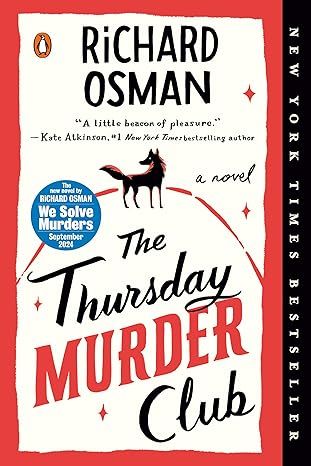
The Thursday Murder Club: A Novel (A Thursday Murder Club Mystery)
4.3
-
155,575
$6.33

Sapiens: A Brief History of Humankind
4.6
-
140,302
$13.49

The Butterfly Garden (The Collector, 1)
4.3
-
88,556
$9.59
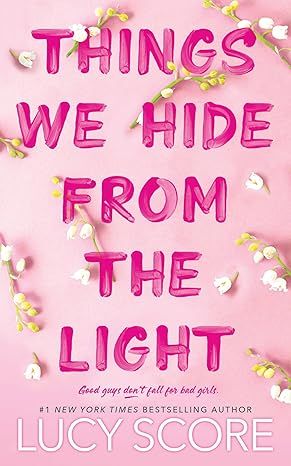
Things We Hide from the Light (Knockemout Series, 2)
4.4
-
94,890
$11.66
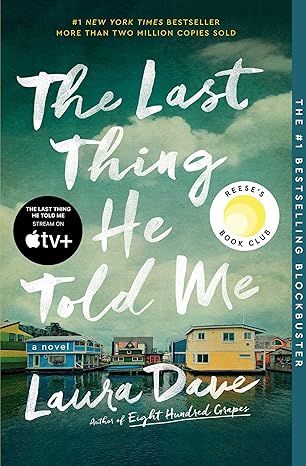
The Last Thing He Told Me: A Novel
4.3
-
154,085
$2.99
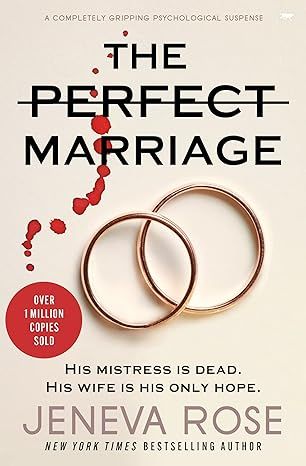
The Perfect Marriage: A Completely Gripping Psychological Suspense
4.3
-
143,196
$9.47

The Coworker
4.1
-
80,003
$13.48

First Lie Wins: A Novel (Random House Large Print)
4.3
-
54,062
$14.99
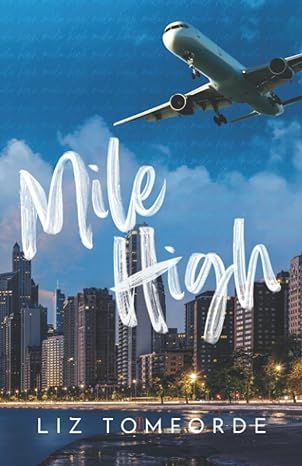
Mile High (Windy City Series Book 1)
4.4
-
59,745
$16.19

Layla
4.2
-
107,613
$8.99

The Locked Door
4.4
-
94,673
$8.53

